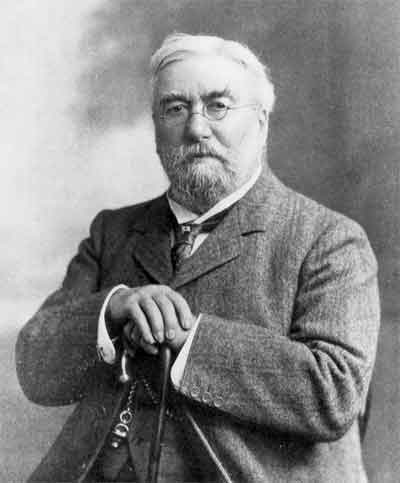We asked Melinda Baldwin, who specializes in the history of scientific journals, to offer some thoughts on Randy Schekman's recent editorial in the Guardian. Melinda is currently finishing a book, Making Nature: The History of a Scientific Journal, to be published by the University of Chicago Press. You can learn more about her work here.
On Tuesday, Nobel Prize-winning biologist Randy Schekman
made a startling announcement: he intends to boycott three top scientific
journals—Science, Nature, and Cell—that published much of his Nobel-winning research. According to Schekman, these “luxury journals” are “damaging” and
“distorting” science. As researchers, funding
bodies, and tenure committees have focused on brand
names and impact factors, the quality of papers—and of science—has declined.
 |
| Top Journals Science, Nature, and Cell (Image Source) |
Schekman’s editorial naturally sparked my interest—I am
currently finishing a book about the history of Nature—and made me think about journal prestige in the twenty-first
century. The three “luxury journals” certainly don’t lament their status as the
world’s most sought-after scientific publications. In Nature’s case, this level of prestige is (as I argue in my book)
partly the result of a conscious effort by several Nature editors to attract interesting papers and make Nature a desirable place to publish new
research.* But it is also bottom-up: for decades, researchers have chosen to publish in Nature, and it is this role of contributors I want to explore today.
As more and more contributors chose Nature, the increase in submissions drove down the acceptance rate—which only made publication there more desirable. Thus, researchers and publishers get caught in feedback loop. Certain
journals are considered prestigious largely because they accept so few
submissions, and in turn they receive a large number of submissions because they are
considered so prestigious.
Schekman suggests two ways to break this cycle. First, the
luxury journals could stop “artificially restricting” the number of papers they
accept and raise their acceptance rates. Second, and more provocatively,
Schekman points out that contributors could stop sending papers to luxury journals—and announces that his lab will no longer submit papers to Science, Cell, or Nature. Schekman says he’s taking this step to try and “break the tyranny
of the luxury journals” and he encourages other researchers to join him.
Could contributor pressure really change how a scientific
journal operates? As a historian, I'm allergic to making
predictions about the future, so instead I will say this: it has in the past.
Nature was founded
in 1869 under the leadership of the astronomer and British War Office
bureaucrat J. Norman Lockyer, with the backing of the London publishing house
Macmillan and Company. Lockyer had a very specific vision for his new weekly
journal: he wanted Nature to be a
publication written by men of science** but accessible to laymen.
 |
| Norman Lockyer (Wikimedia Commons) |
In his initial circular asking for contributions, Lockyer
was careful to emphasize that Nature was
not a specialized scientific
journal. Instead, Lockyer hoped that Nature
would become weekly reading for Britain’s most influential barristers,
businessmen, and members of Parliament. His ultimate goal was for Nature to help convince prominent
Britons that science was an important endeavor that deserved intellectual
respect (and also significantly more funding).
British men of science, however, proved less interested than
Lockyer had hoped in writing journalistic articles aimed at an audience of
laymen. Instead, Lockyer found himself with a pile of specialized, technical
submissions that would have been near-incomprehensible to anyone without a
scientific background. His contributors simply did not send him the
journalistic pieces he wanted, and Lockyer was not about to turn to science
journalists (of whom he had an extremely low opinion) to fill the gap.
Determined that Nature’s
articles should be written
exclusively by qualified researchers, Lockyer printed his contributors’ technical
submissions. By 1872, the clergyman Charles Kingsley—a man with wide-ranging
knowledge of recent scientific research—found himself compelled to tell his
friend Lockyer that Nature was no
longer accessible to laymen. “I have the highest respect for [Nature], and I wish I were wise enough
to understand more of it,” he wrote in a letter to Lockyer. “But I fear its
circulation must be more limited than you would wish.”
 |
| Original Masthead of Nature (Wikimedia Commons) |
When an article in Science
or Cell or Nature can make a scientist’s career, as it can today, it can be
easy to see the editorial staff as the all-powerful gatekeepers of scientific
success. But Schekman’s editorial and the early history of Nature remind us that readers and contributors are not passive
nodes in the network of science publishing. Whether one researcher’s boycott
will have an impact remains to be seen, but we should not discount the power of
contributors to shape the development of a scientific journal.
______________________
* Although I feel compelled to mention that Nature’s current editor, Philip
Campbell, has been a consistent critic of the over-use of impact factors and
other measures of “prestige” or “importance.”

2 comments
Color design of your blog is very nice. About Randy Schekman this time with not much happening palgiat include sources that they use as a reference. ask permission to share miraculous science journal htpp: //www.journalcourse.com
Aspirants who want to pursue their career in journalism can appear for courses in mass communication. In Australia, there are a large number of mass
communication colleges, which offer different Courses in English journalism, radio and television journalism and advertising
and public relations.
research journals
Note: Only a member of this blog may post a comment.